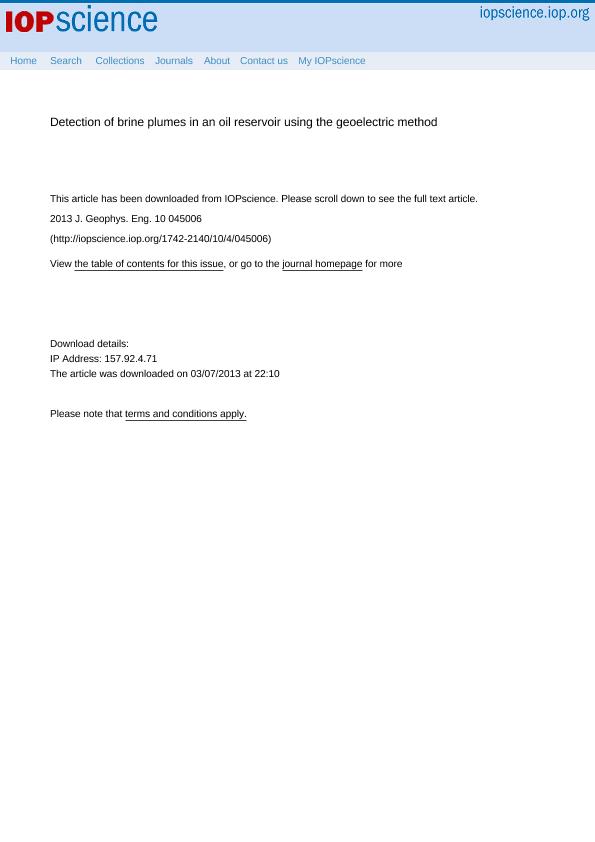Artículo
Detection of brine plumes in an oil reservoir using the geoelectric method
Fecha de publicación:
02/07/2013
Editorial:
IOP Publishing
Revista:
Journal of Geophysics and Engineering
ISSN:
1742-2132
Idioma:
Inglés
Tipo de recurso:
Artículo publicado
Clasificación temática:
Resumen
During water injection in a reservoir at the secondary recovery phase, oil is replaced by salt water, producing different saturation zones in the formation containing this reservoir. This process could be optimized if the direction of the fluids is monitored. Since there are large contrasts in the electric conductivity between salt water and oil, geoelectrical methods could provide a water saturation map at any given moment of the production. The case we study here corresponds to a rather shallow reservoir (between 500 and 600 m in depth). As the wells are in production, electrodes for borehole measurements cannot be introduced. Hence, our objectives are to determine the possibilities of detecting the channelling direction of saline water between injection and producing wells, and applying the method of placing electrodes on the surface or even burying them, but at depths corresponding to shallow layers. We design an electrical model of the reservoir and then numerically simulate the geoelectrical response in order to determine the conditions under which the anomaly, i.e. the accumulation of brine in a reduced area, can be detected. We find that the channelling of the brine can be detected for the reservoir studied here if the electrodes are placed at 180 m depth. The Wenner configuration using 16 electrodes provides the best resolution. Therefore, monitoring the voltage at a number of electrodes embedded at rather shallow depths (from a technical-logistic point of view) could give information about the direction of the saline channelling even if a quantitative image of the subsoil cannot be obtained due to the reduced number of electrodes used in the study.
Palabras clave:
BRINE PLUMES
,
GEOELECTRIC
,
NUMERICAL MODELLING
,
OIL RECOVERY
Archivos asociados
Licencia
Identificadores
Colecciones
Articulos(IFIBA)
Articulos de INST.DE FISICA DE BUENOS AIRES
Articulos de INST.DE FISICA DE BUENOS AIRES
Articulos(OCA CIUDAD UNIVERSITARIA)
Articulos de OFICINA DE COORDINACION ADMINISTRATIVA CIUDAD UNIVERSITARIA
Articulos de OFICINA DE COORDINACION ADMINISTRATIVA CIUDAD UNIVERSITARIA
Articulos(SEDE CENTRAL)
Articulos de SEDE CENTRAL
Articulos de SEDE CENTRAL
Citación
Bongiovanni, Maria Victoria Flavia; Osella, Ana Maria; de la Vega, Matias; Tichno, Adrian; Detection of brine plumes in an oil reservoir using the geoelectric method; IOP Publishing; Journal of Geophysics and Engineering; 10; 4; 2-7-2013; 1-9
Compartir
Altmétricas




